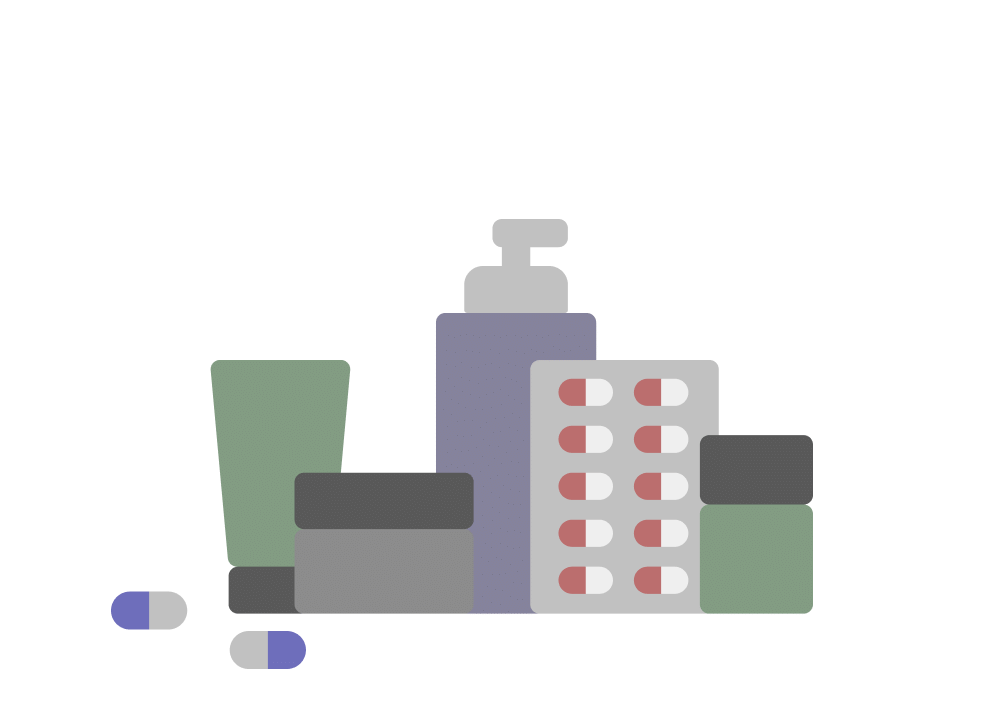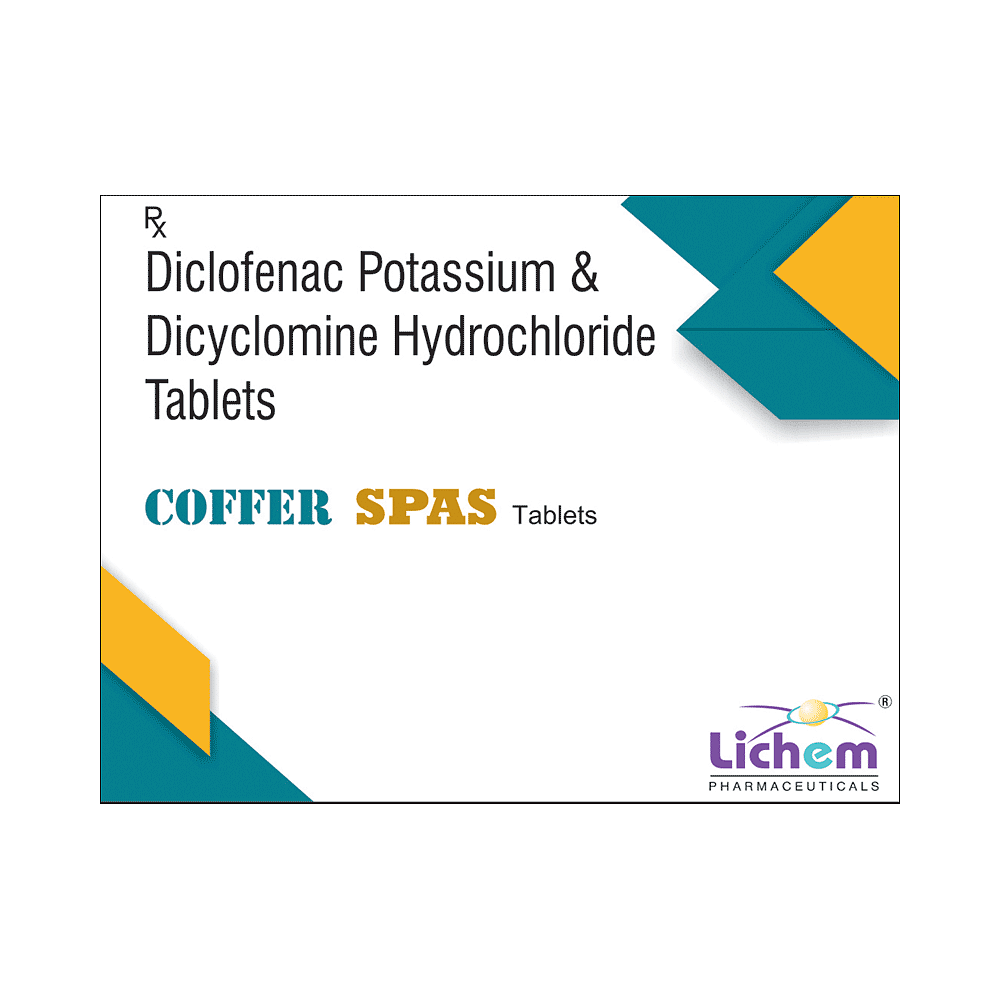
Cataspa Tablet
Manufacturer
USV Ltd.
Salt Composition
Dicyclomine (20mg) + Diclofenac (50mg)
Key Information
Short Description
Cataspa Tablet is a combination medicine used to treat abdominal pain, bloating, discomfort, and cramps by relaxing the muscles of the stomach and gut.
Dosage Form
Tablet
Introduction
Cataspa Tablet is taken with food in a dose and duration as advised by the doctor. The dose you are given will depend on your condition and how you respond to the medicine. You should keep taking this medicine for as long as your doctor recommends. If you stop treatment too early your symptoms may come back and your condition may worsen. Let your healthcare team know about all other medications you are taking as some may affect or be affected by this medicine.
Directions for Use
Take this medicine in the dose and duration as advised by your doctor. Swallow it as a whole. Do not chew, crush, or break it. Cataspa Tablet is to be taken with food.
Safety Information
Side Effects
No common side effects listed
Alcohol Warning
It is unsafe to consume alcohol with Cataspa Tablet.
Breastfeeding Warning
Cataspa Tablet is probably unsafe to use during breastfeeding. Limited human data suggests that the drug may pass into the breastmilk and harm the baby.
Pregnancy Warning
Cataspa Tablet is unsafe to use during pregnancy as there is definite evidence of risk to the developing baby. However, the doctor may rarely prescribe it in some life-threatening situations if the benefits are more than the potential risks. Please consult your doctor.
How it works
Cataspa Tablet is a combination of two medicines: Dicyclomine and Diclofenac, which relieves abdominal pain and cramps. Dicyclomine is an anticholinergic which works by relaxing the muscles in the stomach and gut (intestine). It stops sudden muscle contractions (spasms) thereby relieving cramps, pain, bloating, and discomfort. Diclofenac is a non-steroidal anti-inflammatory drug (NSAID) which works by blocking the release of certain chemical messengers that cause abdominal pain and inflammation (swelling).
Quick Tips
Take it when the first sign of pain occurs Avoid taking any antacid at least 2 hours before or after taking Cataspa Tablet If you develop any new symptoms or if your symptoms get worse, make an appointment to see your doctor for further advice
Related Medicines

Calvsr Tablet

Coffer Spas Tablet

Spasbit 20mg/50mg Tablet

Dipospas 20mg/50mg Tablet

Runspa Tablet

Duospan 20mg/50mg Tablet

Diclospa 20 mg/50 mg Tablet

Spas K 20mg/50mg Tablet

Spasmat 20mg/50mg Tablet

Ifispas 20mg/50mg Tablet
Frequently asked questions
What happens when my pain is relieved? Can I stop taking Cataspa Tablet?
Cataspa Tablet is usually used for short-term pain relief. If your pain has subsided, you may be able to discontinue its use. However, it's essential to consult with your doctor for guidance on whether to continue or discontinue the medication.
Can Cataspa Tablet cause dry mouth?
Yes, using Cataspa Tablet can lead to dry mouth as a side effect. To alleviate this issue, drink plenty of water throughout the day and keep some by your bedside at night. You may also consider using lip balm if you experience dry lips. Additionally, try to avoid consuming acidic, spicy, or salty foods.
Can long-term use of Cataspa Tablet cause kidney damage?
Yes, prolonged use of Cataspa Tablet can potentially harm your kidneys. It's not recommended for individuals with pre-existing kidney disease. If you have concerns about your kidney health or any other medical conditions, consult with your doctor before using this medication.
What happens if I take a higher dose than recommended?
Taking more Cataspa Tablet than prescribed can increase the risk of experiencing side effects. If you're not seeing sufficient pain relief or if your symptoms worsen, consult with your doctor to reassess your dosage and treatment plan.
How should I store and dispose of Cataspa Tablet?
To ensure safe storage and disposal, keep the medication in its original packaging, tightly sealed. Follow the instructions provided on the pack or label for proper storage. Dispose of any unused medication responsibly, making sure it's not accessible to pets, children, or other individuals.


